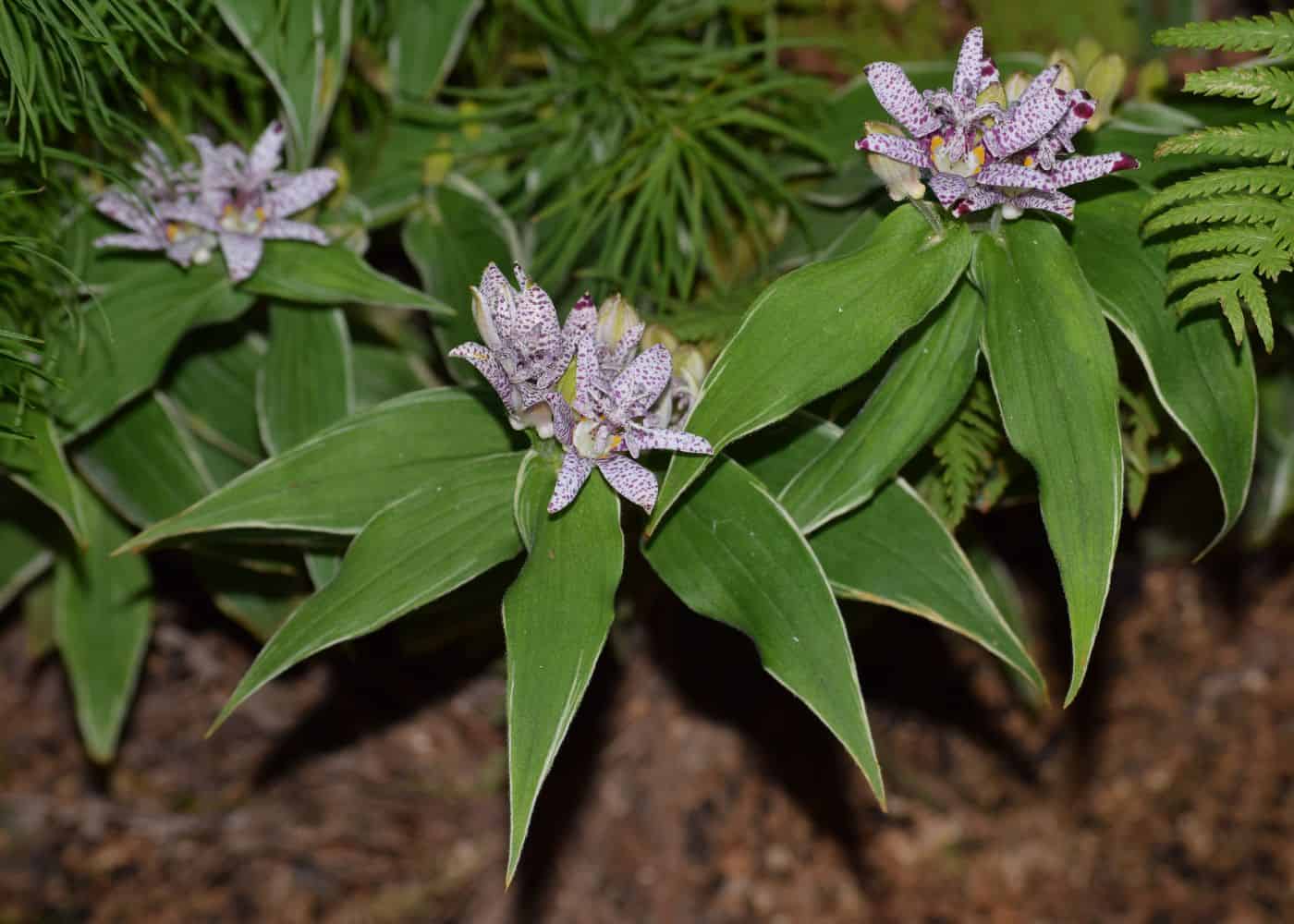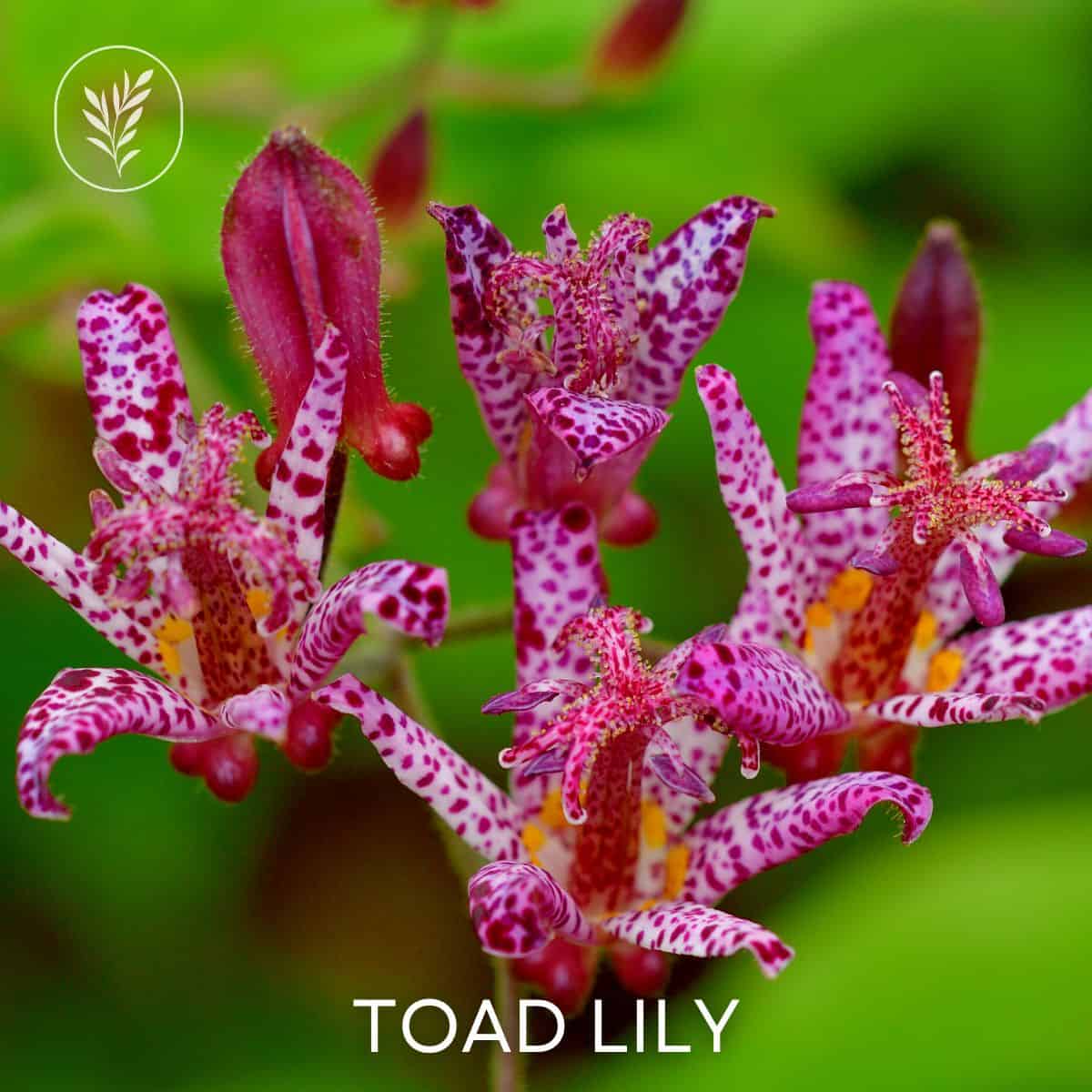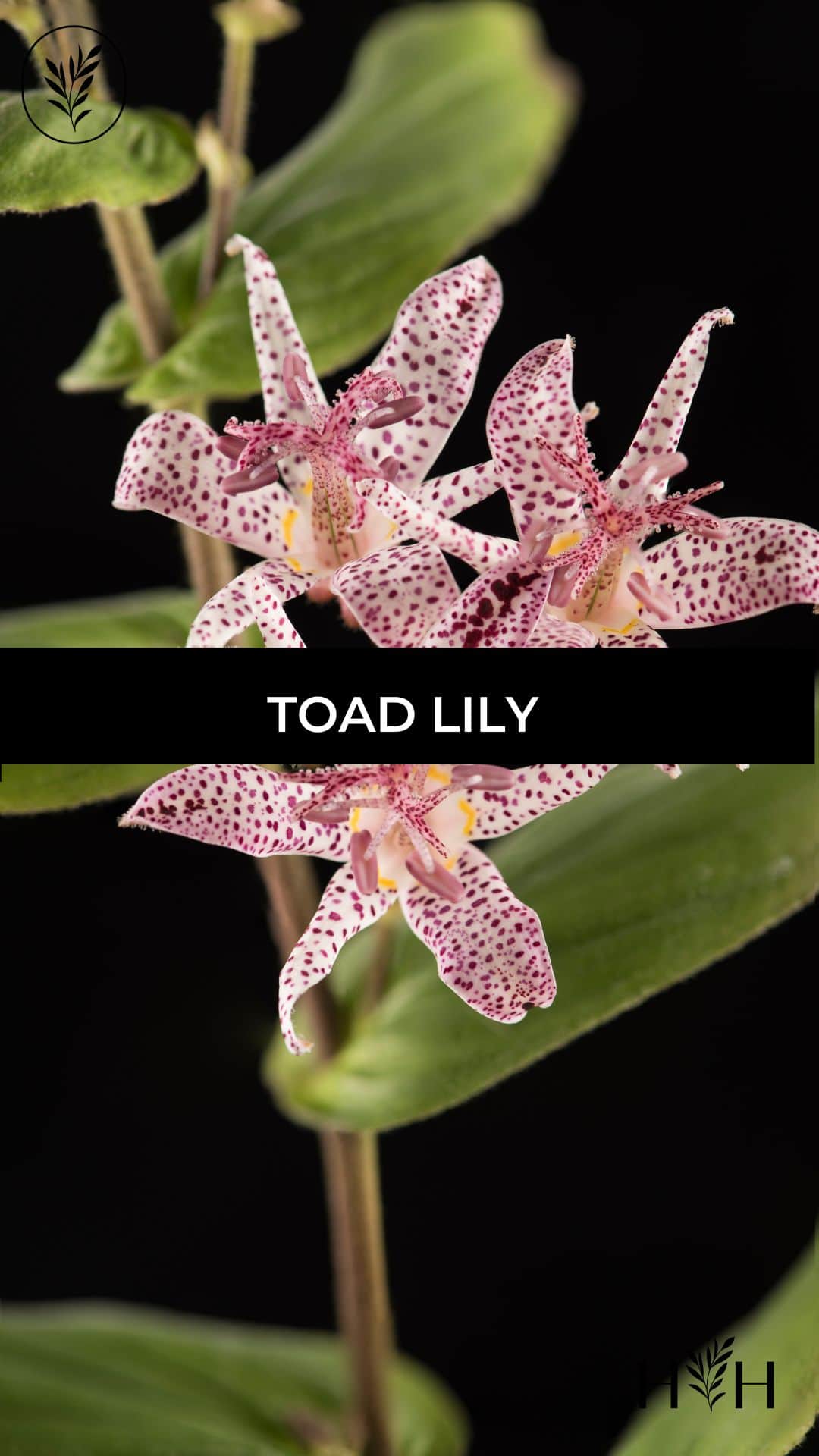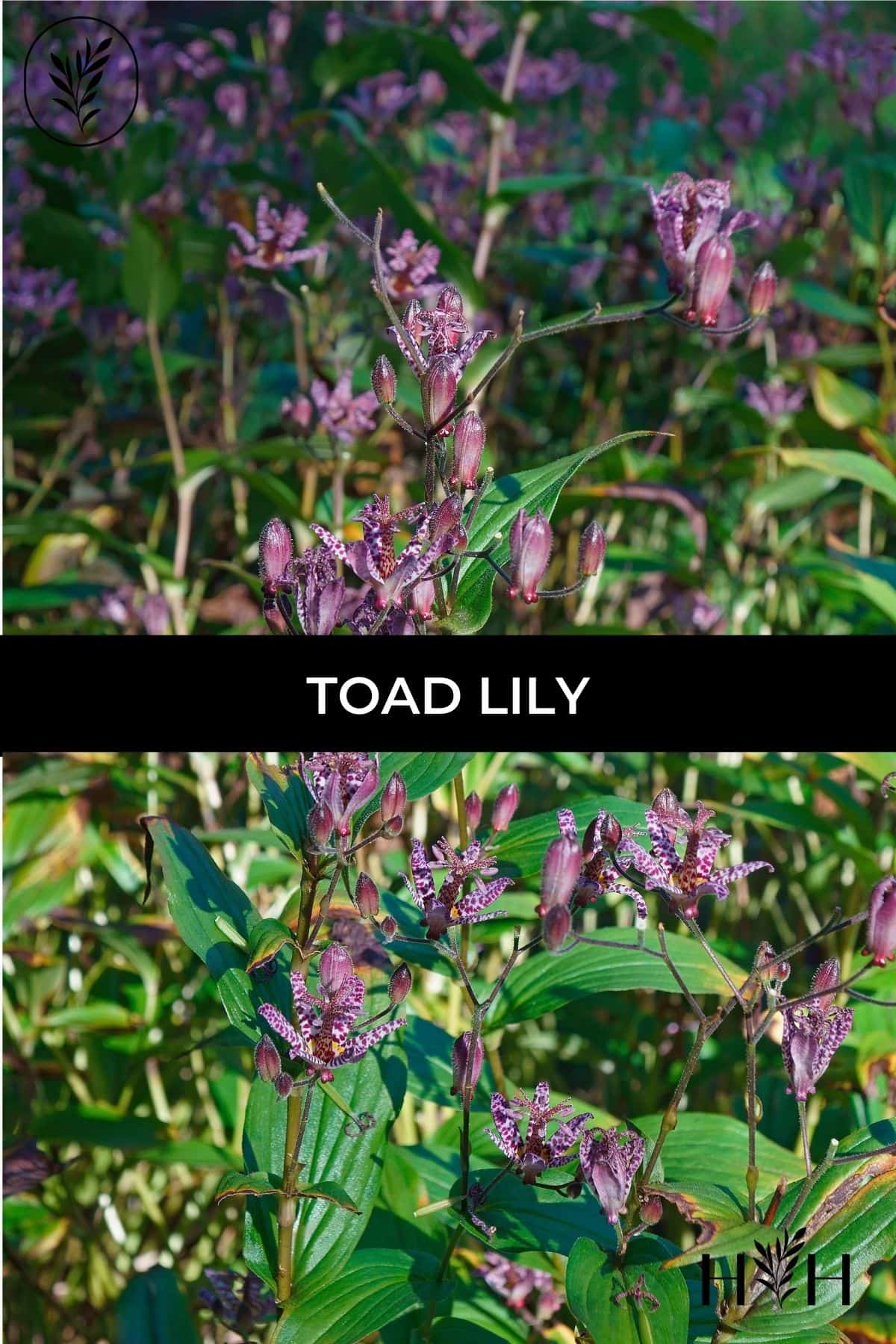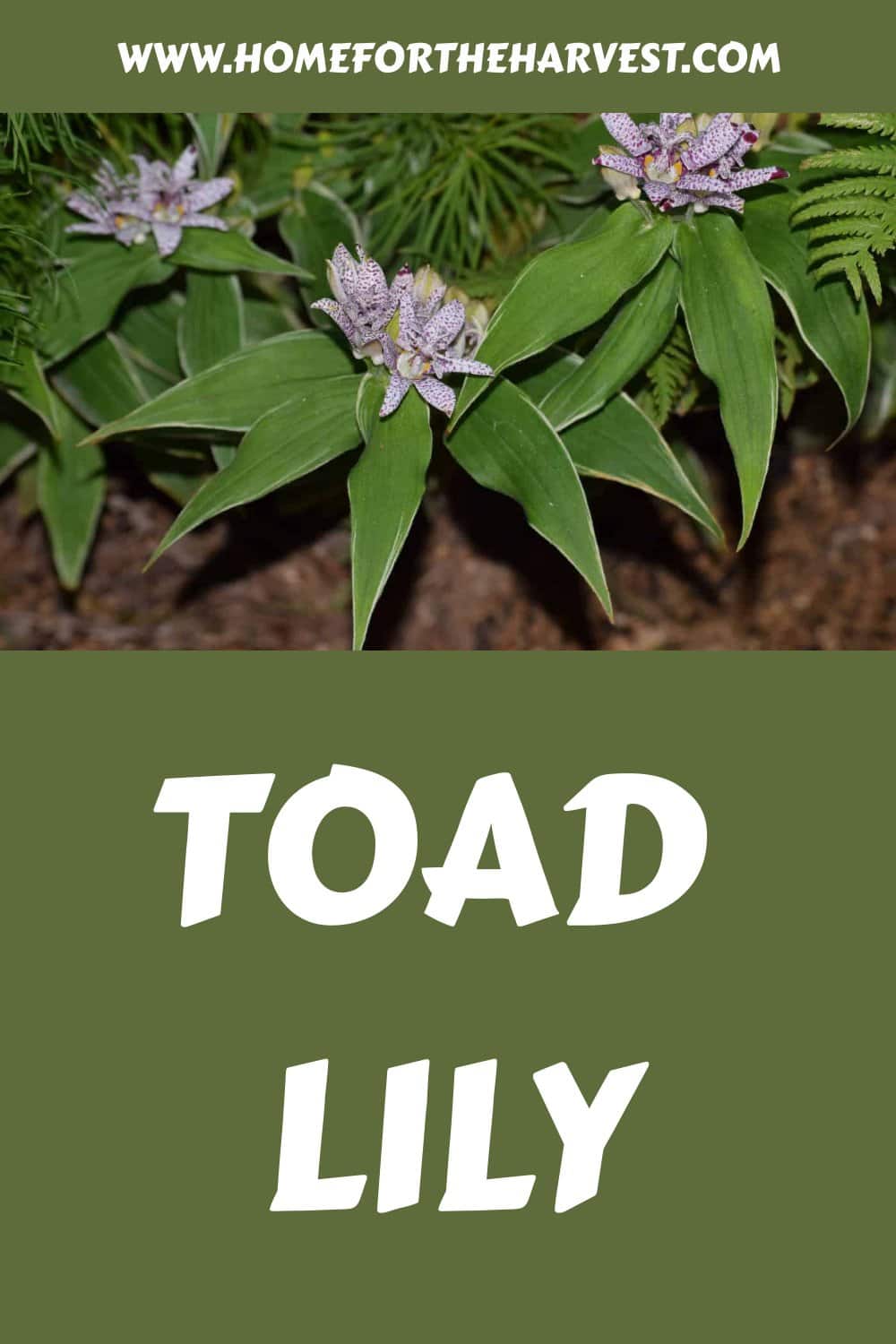If you’re looking to add a pop of color and texture to your garden, the stunning toad lily is just what you need! This unique flower is sure to become an eye-catching centerpiece in any outdoor space. Not only are they beautiful, but they’re also usually easy to take care of.
The toad lily (Tricyrtis formosana) is a herbaceous perennial plant known for its elegant spotted purple flowers. Spreading by rhizomes, they generally grow best in slightly shaded areas and in moist, well-drained soil. The toad lily can be grown outdoors in Zone 5-9.
Introduction to the toad lily
Toad lilies (Tricyrtis formosana) are an attractive addition to the garden. Part of the lily family, they are native to the southwest islands of Japan and Taiwan.
Toad lily flowers make them a great choice for those looking to add a bit of color and interest to their outdoor space. Lilies are also known for being easy to care for, requiring minimal effort on the part of the gardener. They’re also excellent at attracting pollinators such as bees, butterflies, and even sometimes hummingbirds.
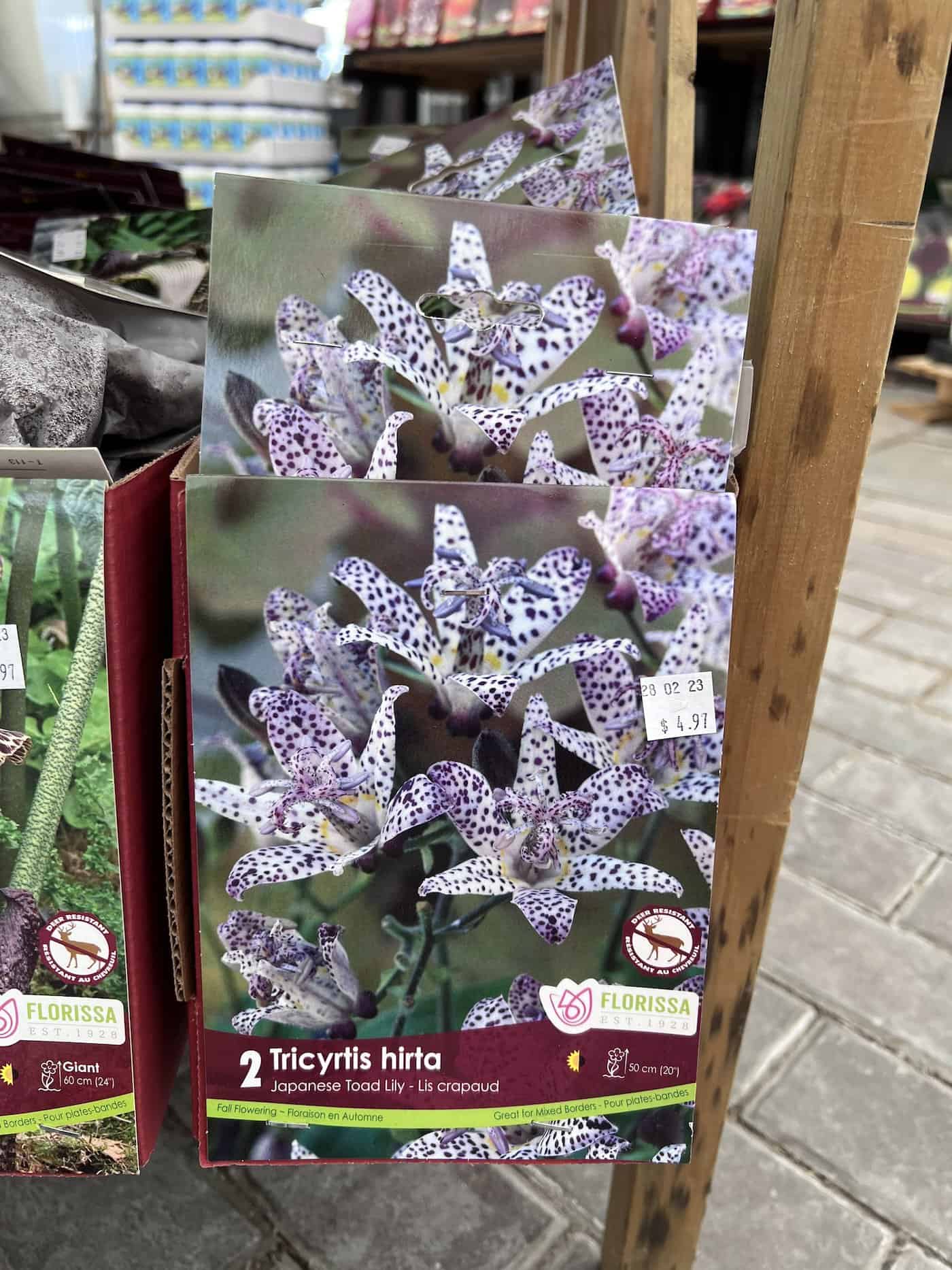
Caring for Japanese toad lilies requires very little maintenance once established in your garden bed or container. During the growing season (spring through fall), keep the soil evenly moist but not soggy by watering deeply once per week if there has been no rain recently. In winter months, you may need to provide additional water if temperatures remain above freezing and rainfall is scarce.
Fortunately, most pests tend to stay away from lilies. However, occasional aphids might show up during summer months, needing attention, and quickly dealt with using an organic insecticidal soap spray solution treatment method instead of chemical-based products whenever possible.
As far as diseases go, watch out mainly for fungal infections, which could cause wilting and leaf discoloration issues, possibly needing fungicide applications made accordingly as soon as possible. It is always wise to take a better safe than sorry approach here; following through on this decision-making process is the best bet.
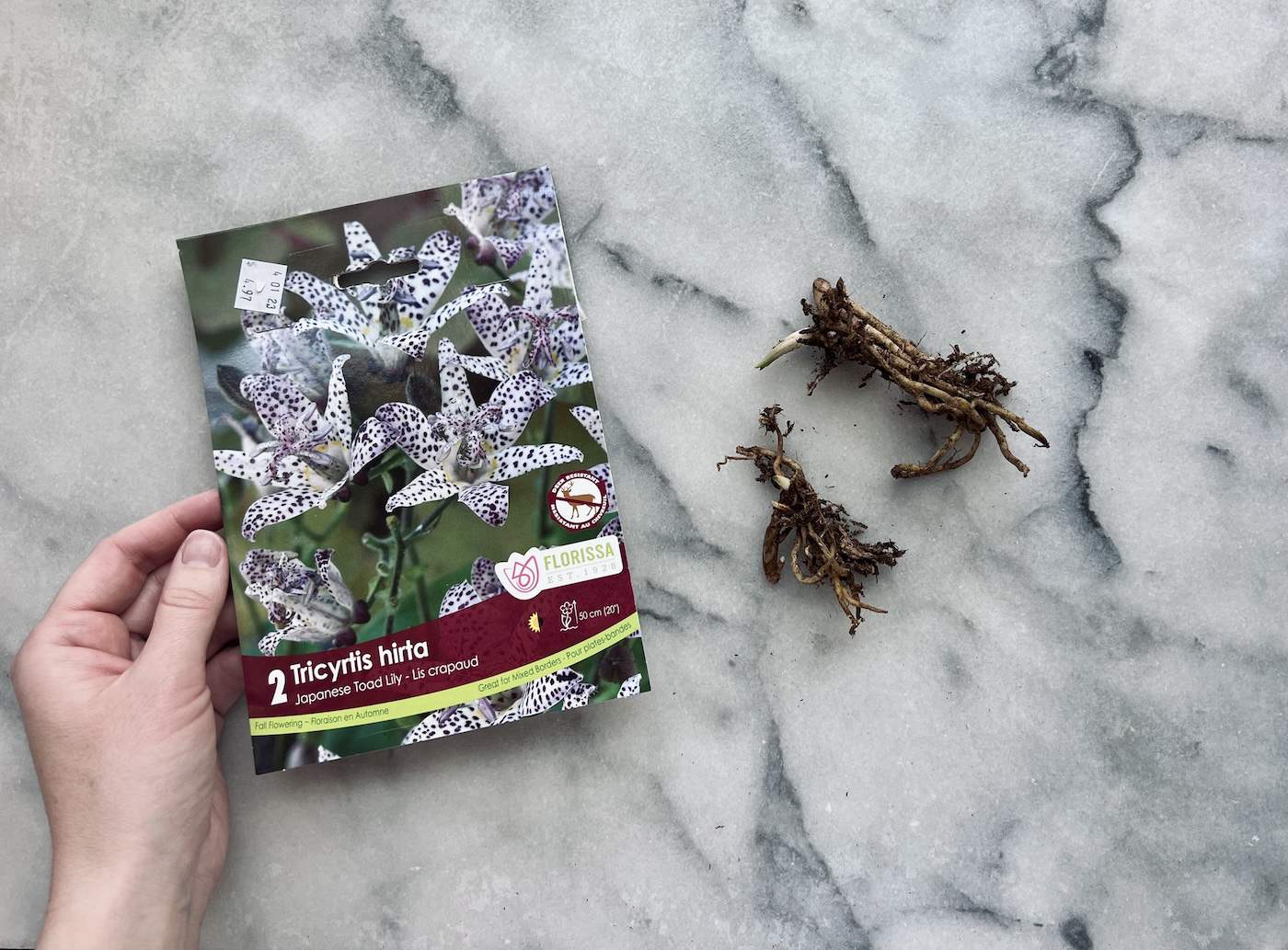
Planting toad lilies
Planting these lilies is a great way to add some color and texture to your garden. The best time to plant most types of lilies is in the early spring when the soil has had a chance to warm up. They prefer moist, well-drained soils that are high in organic matter and slightly acidic. Toad lilies should be planted about 4 inches deep and spaced 8-12 inches apart for optimal growth.
When it comes to sunlight, these plants do best with partial shade or dappled sun throughout the day. If you’re planting multiple varieties of toad lilies together, make sure they get enough space between each other so they can spread out without competing for light and nutrients from the soil.
Once planted, water your new additions deeply but don’t overdo it—too much moisture can cause root rot or fungal diseases like powdery mildew or rust spots on their leaves. Mulching around your plants will help keep weeds at bay while also helping retain moisture in the soil during dry spells.
Fertilizing isn’t necessary, but if you choose to do so, use an all-purpose fertilizer once per year after the blooming season ends (typically late summer). This will give them an extra boost of energy before winter sets in.
When planting toad lilies, it is important to ensure that the soil is well-draining and in an area with partial shade. Now let’s look at how to care for these beautiful flowers once they are planted.
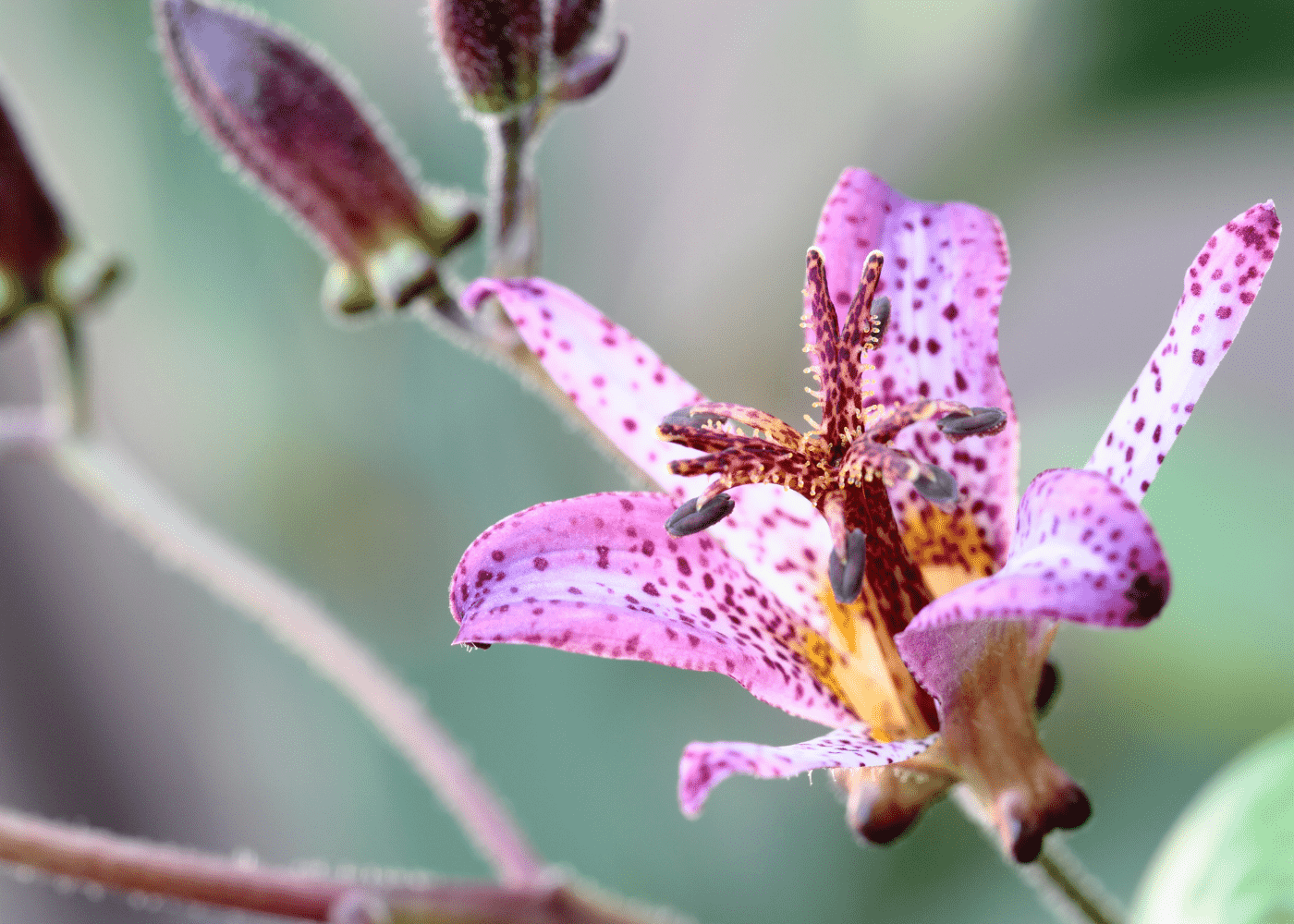
Caring for toad lilies
Toad lilies prefer moist soil but should not be overwatered. Water your toad lilies when the top inch of the soil is dry. If you have sandy or clay soils, it may require more frequent watering than other types of soils. Avoid wetting the foliage, as this can lead to fungal diseases and rot.
Fertilize your toad lilies in early spring with a balanced fertilizer. Follow the directions on the package for proper application rates and frequency of fertilization, as each product is different.
Prune off any dead leaves or stems at any time during the growing season if needed for aesthetic purposes or to encourage new growth. In late summer, remove spent flower stalks (deadhead) by cutting them back just above where they join a leaf stem; this will help promote reblooming later in the season and keep plants looking tidy throughout winter months.
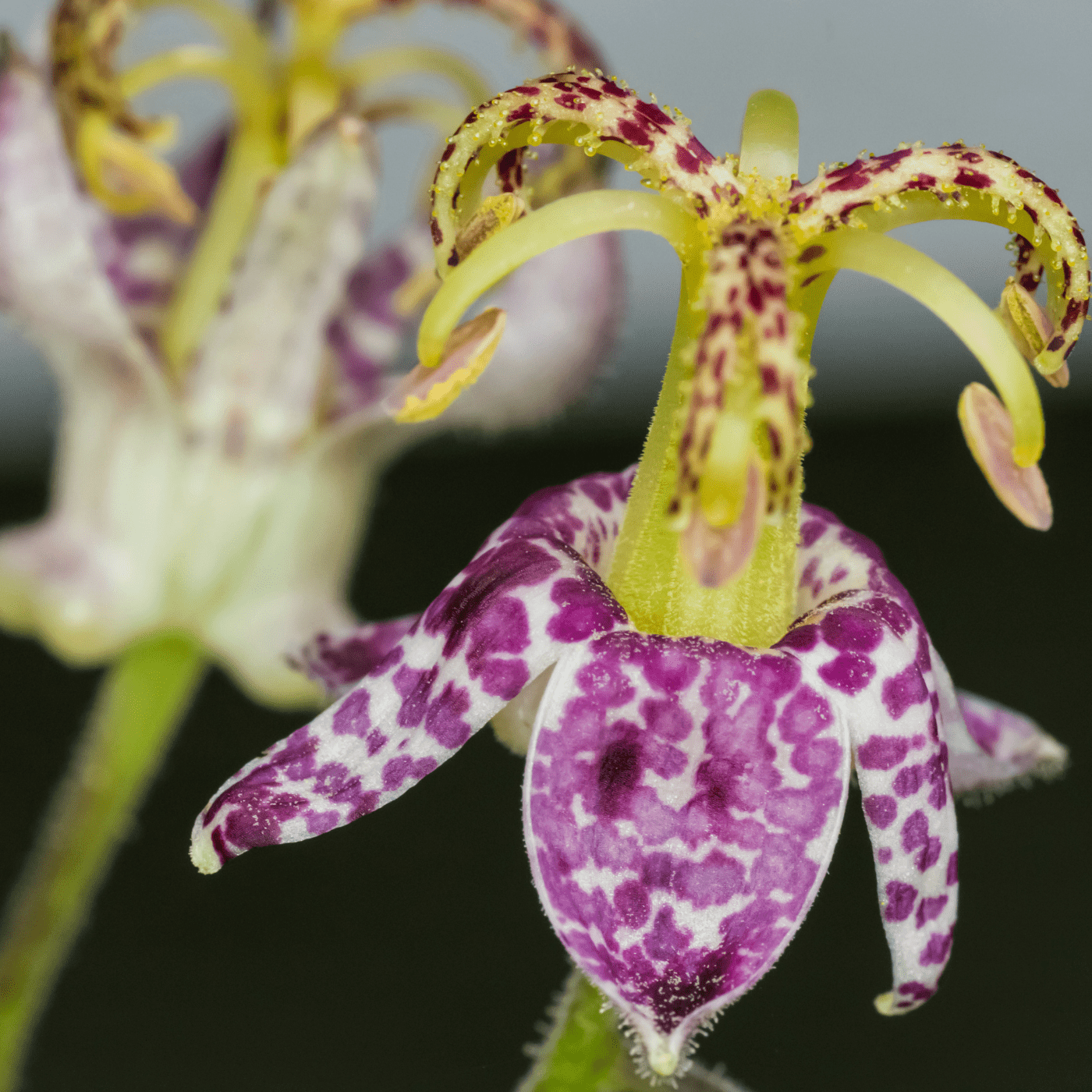
Propagating toad lilies
Propagating toad lilies is a great way to increase your garden’s beauty and add more of these lovely flowers. Toad lilies are easy to propagate, so even beginner gardeners can have success with this project.
Division is the most common method for propagating toad lilies. It involves dividing an existing plant into two or more parts and replanting them in separate pots or beds. This should be done in early spring when the plants are just beginning to emerge from dormancy.
To divide a plant, carefully dig up the entire root system and use a sharp knife or spade to cut it into sections that each contain at least one bud eye (the part of the stem where new growth will come out). Replant each section immediately, making sure that all roots are covered with soil and that no air pockets remain around them. Water thoroughly after planting and keep evenly moist until established.
Seeds can also be used for propagation, but they take longer than division since you must wait for seeds to germinate before transplanting seedlings into their permanent home in your garden bed or potting container.
Collect ripe seed pods from healthy plants in late summer/early fall by cutting off stems containing mature pods with scissors; then place them on newspaper indoors until they dry completely before storing them away from light sources such as direct sunlight or fluorescent lights, which may cause fading of colors over time.
Sow seeds directly outdoors during winter months when temperatures drop below 40 degrees Fahrenheit (4°C) – this helps break down any hard outer coating on the seeds so they’ll sprout faster once warmer weather arrives. If starting indoors instead, sow seeds onto dampened paper towels inside plastic bags at room temperature until germination occurs (about 2-3 weeks). Transplant seedlings outdoors after all danger of frost has passed; make sure not to crowd plants by spacing them 8-12 inches apart depending on the size desired at the maturity stage.
Common pests & diseases
Like all plants, toad lilies can be susceptible to pests and diseases. Knowing what common problems they may face is the best way to keep them healthy and thriving in your garden.
Slugs and snails love munching on tender young leaves of the toad lily plant. To prevent these slimy critters from damaging your plants, you should regularly check for their presence around the base of the stems or near leaf axils (where leaves meet stems). If you find slugs or snails present, remove them by hand or use bait traps specifically designed for these creatures.
Powdery mildew is a fungal disease that causes white spots on both sides of leaves as well as stunted growth in affected areas. It thrives in warm temperatures with high humidity levels, so it’s important to provide adequate air circulation around your plants if possible. You can also spray an organic fungicide such as neem oil onto affected foliage every 7-10 days until symptoms disappear completely.
Aphids are small insects that feed off sap from new growth on the plant, which can cause distorted shapes and yellowing of foliage over time if left untreated. To get rid of aphids naturally, try spraying a solution made up of 1 part rubbing alcohol mixed with four parts water directly onto infested areas twice per week until signs of activity have stopped completely. Additionally, introducing beneficial insects such as ladybugs into your garden will help keep aphid populations under control naturally without harming other beneficial organisms living there too.
Root rot is caused by overwatering, which leads to soggy soil conditions where fungi thrive easily, leading to root decay over time. To avoid this problem altogether, make sure you’re only watering when necessary and never leave standing water around the roots.
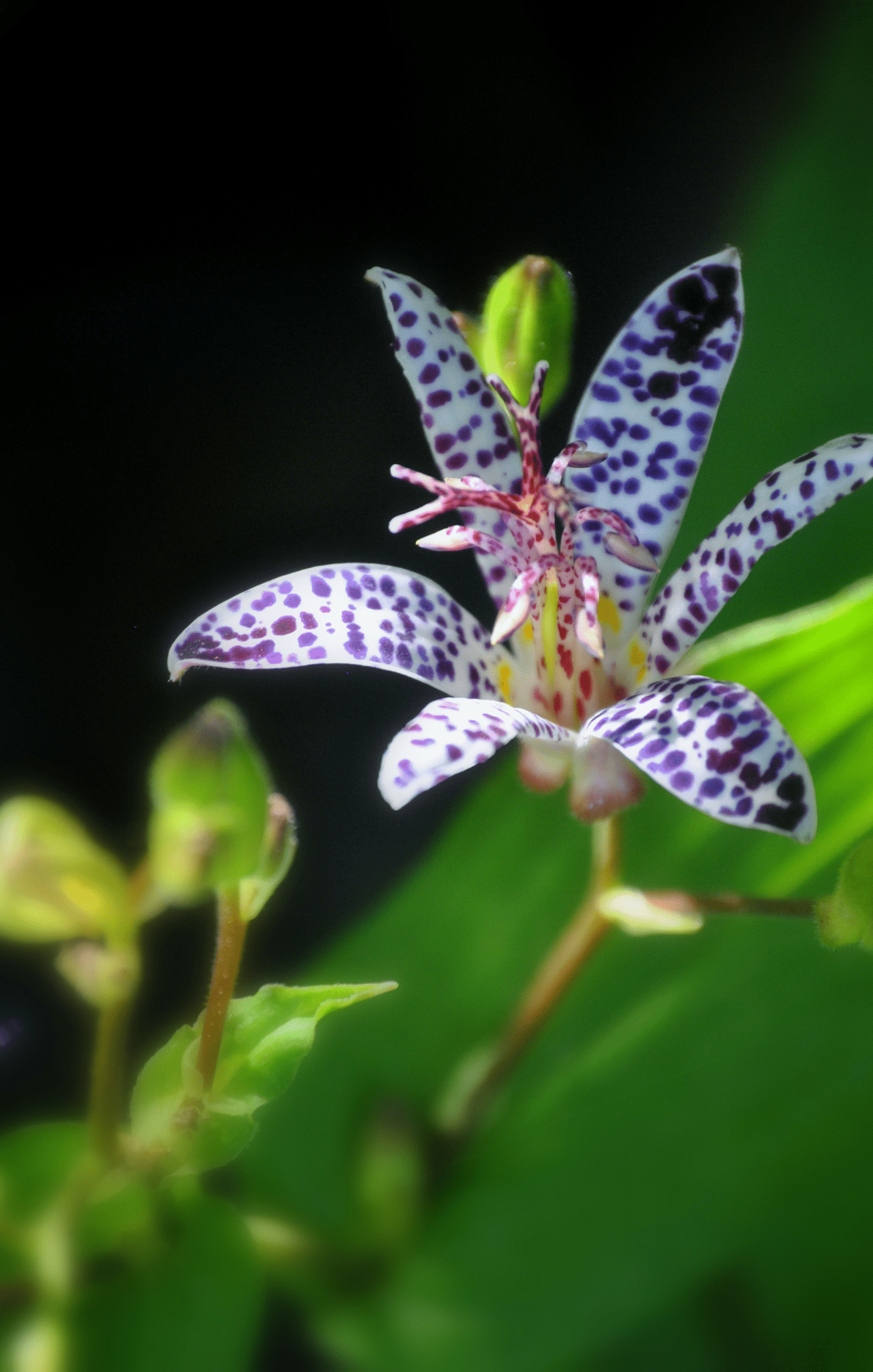
FAQs about toad lilies
Will toad lilies spread?
Toad lilies are a popular perennial flower that can spread in the right conditions. They grow from rhizomes, which are underground stems that send out roots and shoots. If planted in moist soil with plenty of sunlight, toad lilies will spread quickly over time as their rhizomes multiply and form new plants. However, if they’re planted in dry or shady areas, they won’t be able to thrive and may not spread at all. With proper care and maintenance, you can enjoy these beautiful flowers for years to come.
How tall do toad lilies grow?
Toad lilies typically grow to a height of 12-24 inches. They make a good flowering shade groundcover or low-growing plant for the front of a border garden. The foliage is attractive, with heart-shaped leaves, while the flowers come in shades of pink, purple or white. Toad lilies are an excellent choice for gardeners looking for a beautiful addition to their landscape without needing to be an expert gardener.
Why are they called toad lilies?
Toad lilies are so named because the petals resemble the skin of a toad. The spotted, mottled leaves and petals give them an uncanny likeness to the amphibian’s hide. They also tend to grow in damp areas, like near ponds or streams – much like where you’d find a real-life toad. Toad lilies are popular garden plants due to their unique beauty and easy care requirements. With proper planting and maintenance, they can bring long-lasting color and texture into any outdoor space.


